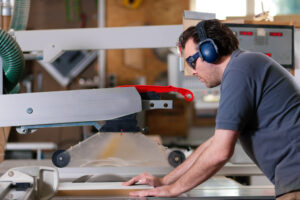It’s a tough pill to swallow, for many, dealing with and admitting the reality of hearing loss. Nonetheless, you soldiered on and went to a hearing expert for a hearing aid fitting session, because you recognized that’s what was best for your health. Most likely, you quickly recognized the advantages one receives from wearing a hearing aid, including the ability to hear speech (even amidst the buzz of background noise), the possibility of recognizing from mental decline and the ability to treat tinnitus.
But once in a while you get a loud, piercing, shrieking negative among all the life altering advantages. You get a loud whistling sound from your hearing aids. The squealing you’re hearing is more generally known as feedback. It’s like what happens when a microphone gets too close to the sound system, the only difference is this time it’s directly in your ear. This, luckily for you, is a problem that can be corrected fairly easily. Stopping your hearing aid from squealing can be accomplished using the following suggestions:
1. The Way Your Hearing Aid Fits Can be Adjusted
The positioning of the hearing aid in your ear or the earmold it’s connected to is likely the most common reason for feedback. The sound can get out and reverberate through the microphone of the hearing aid if it doesn’t fit correctly. Depending on how poorly the fit is and how much sound has escaped, the consequences of the leakage can be either a continuous or an intermittent whistling. A plastic tube connects certain hearing aid models with an earmold. Over time, this piece can crack, harden or shrink, which unseats the earmold from its correct position. This movement can cause whistling, but you can correct the problem by replacing the plastic piece.
2. Get Rid of Excessive Earwax
Earwax is really good for our bodies, even though, ironically, we tend to think of it as unwanted or even foul. Dirt and other things are stopped from entering the ears by this gooey substance which acts as a defense. While your ears will self-regulate the quantity of earwax you hold, through actions such as Talking and chewing, there are times when an accumulation of too much earwax can have negative consequences. When you put a hearing aid on top of an extreme amount of earwax, you’re bound to receive feedback. This is because the amplified sound has nowhere to go because of the blockage from the wax. The sound circles back into the microphone because it has no definite exit. There are a few ways to remove an overabundance of wax from your ears such as letting a warm shower run into your ears. In order to avoid undue buildup, however, the best strategy is to have your ears correctly cleaned by a hearing care specialist.
3. Uncover the Microphone
Sometimes the most reliable solution is the most obvious. Have you ever noticed someone trying to take a picture which didn’t come out, only to find that the lens cap was still on? With hearing aids the same thing can occur. Whistling can happen when something is covering the device. If you cover the microphone with your hand or something else, you get the same result, like if you hug someone and put your ear into their shoulder. This issue should be easy to correct just by uncovering the hearing aid.
Here’s a bonus tip: Think about getting a new hearing aid. Some causes for worry are being relieved by modern hearing aid models and manufacturers are integrating new technology regularly. If you’re having problems with whistling from your hearing aids, or you’re interested in learning more about new hearing technology, call us.





